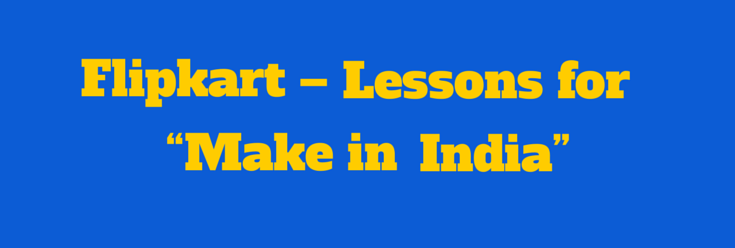|
Disclaimer : This article is entirely based on my reflection on what I read in the media It was exciting and encouraging to experience the marketing campaigns of Flipkart’s billion dollar day and painful and demoralizing to witness pitfalls. I completely empathize with Sachin and Binny who had to write an unconditional apology letter to angry consumers while “celebrating” the victory in round #1 over Amazon, to keep their troops motivated. The biggest question for me about the big billion day was : Is it a flop-show for Flipkart or is it a success ? Is complete acceptance of failure a sign off greatnes ? I felt apologizing and celebrating success at the same time is a concrete evidence of mediocrity In any case, there are significant lessons to be learnt from this which is a classic case of gaps between intent and experience, plan and delivery. We all know the investment and effort that goes into building such a market / consumer momentum for a day like this. We also know the lost image, lost investment, lost opportunity and above all the lost pride due to a result like flopkart. Why did this happen ? Here are my takeaways on the top reasons behind the gap between intent and experience, plan and delivery
Basically, every single person who worked on the project would have felt they did their job perfectly well but the end result was a not a success. The lessons we should learn are very simple : Each one of us must visualize, simulate and experience the customer engagement in our mind while we create a product or service. Each one in the team including suppliers and vendors must collaborate deeply and engage passionately to ensure the customer engagement visualized can be delivered 100%. When so much is at stake, the load and stress test must be done to ensure systems can withstand the load. Finally, when it comes to each of our own deliverable, we must ensure we deliver 110% and leave nothing to chance Few other questions I was asking myself repeatedly but could not get an answer. Some of them are, If such thing has happened in a well funded US company, would heads roll ? Are heads not rolling in India because we do not have depth in leadership in the ecosystem ? Is stringent accountability a necessity for Make in India to succeed ? Only if each person in the team is 100% committed to deliver customer delight, experience vision for customer engagement, execute and deliver on the plans – greatness is guaranteed. Every slip between the cup and the lip gets exposed. I strongly feel, these all are essential for Make in India to become a reality. Cheers
|














